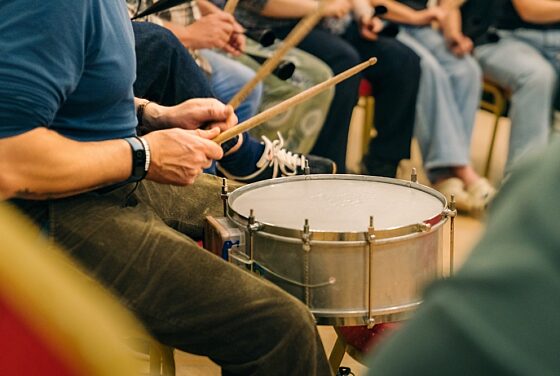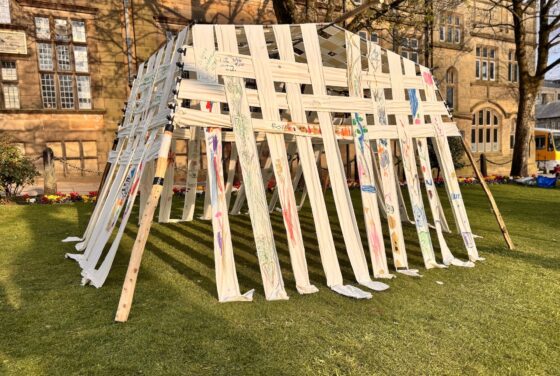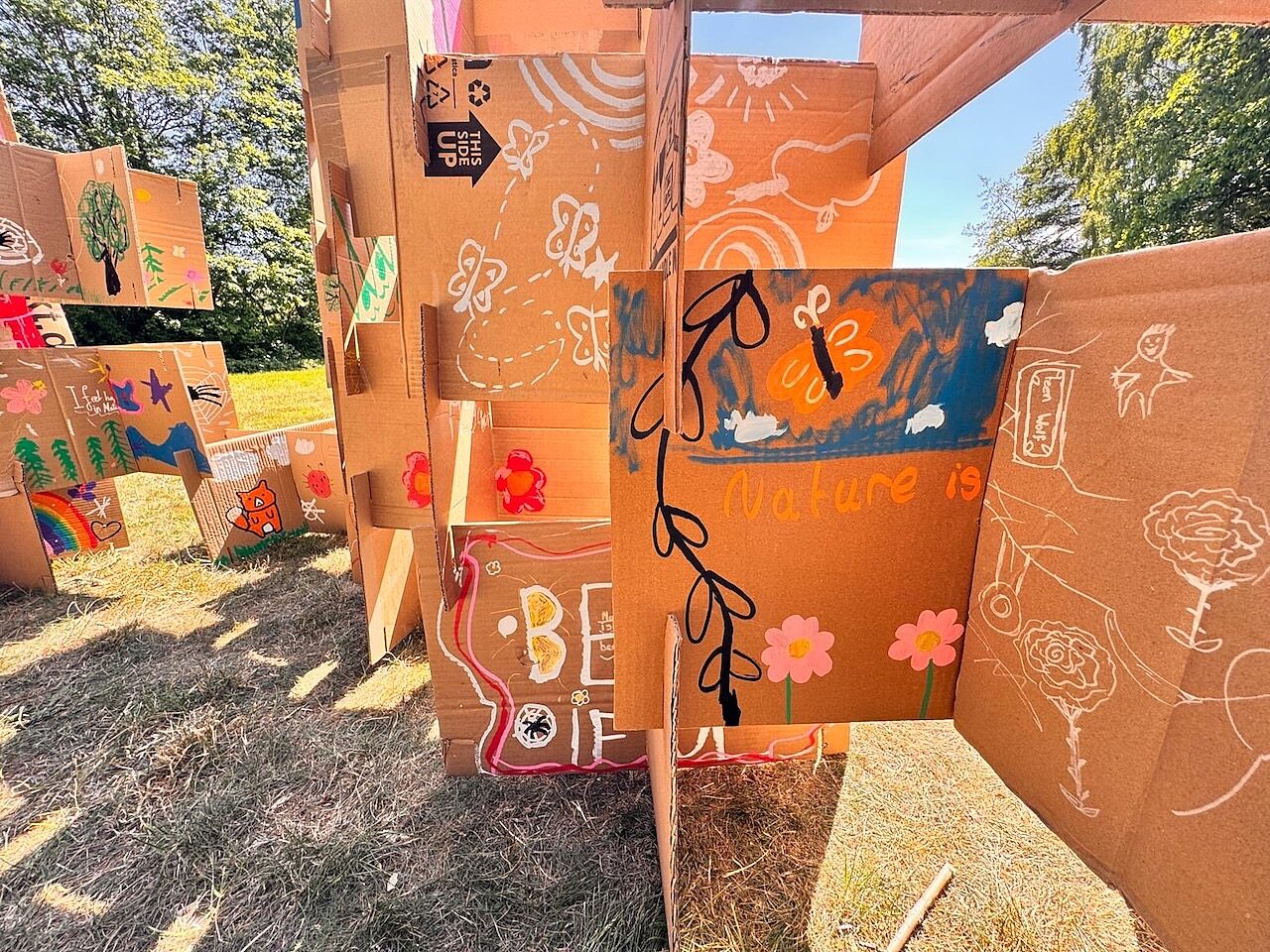
Conceptual Mobility: MAKE Room as a Site-Responsive Artwork
DATE
TAGS
Cora Glasser, Glassball Studio shares their approach to MAKE Room
In late 2024 myself and David Ball were commissioned as lead artists to deliver the Green Room concept. Our brief was to form an innovative community engagement methodology, designed to foster environmental awareness and sustainability through creative placemaking. The countywide project, developed by Local, a creative placemaking practice based in the Peak District, was to form part of the Derbyshire Makes cultural programme. Prior to the start of our commission, we took time to explore the work that had come before—particularly the concepts behind the Green Room and the work by architecture students at Sheffield University. The development process which followed took a somewhat different course, but their research was useful, allowing us to quickly isolate ideas and clarify our own approach, helping to shape a direction that was aligned with our practice.
At the heart of our artistic response to the brief was to challenge, interrogate, and recognise the systemic structures we would need to employ in creating collaborative site-responsive artworks and creative ecologies. We set out to interrogate what materials could—or should—be considered within the context of MAKE Room: What is already present in the locality? What are the implications of transporting materials across distances (economically, environmentally)? Can we utilise what has been discarded, found, or forgotten? These inquiries were not logistical hurdles but rather conceptual opportunities—ways of allowing material decisions to emerge from place, process, and ethics. In short, what do we make the rooms out of that is informed by the conversations around and within?
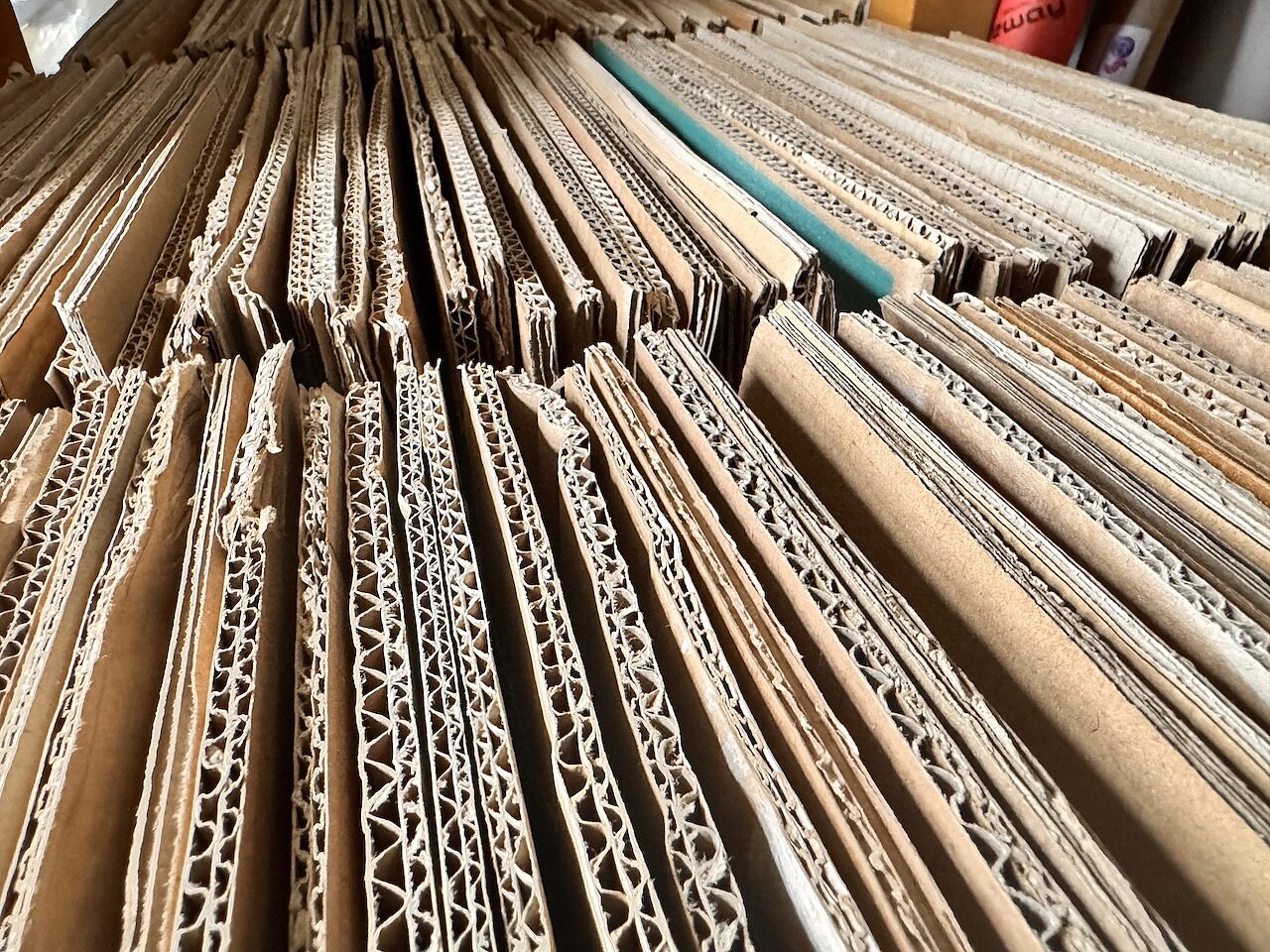
Addressing these points had to be a county-wide creative response. We developed an idea based upon the contradiction of how does an artwork - a MAKE Room - exist in different places, to tour different locations without the need for further transportation? Through our collaborative arts practice Glassball Studio, we thought of a MAKE Room as both an artwork and a spatial framework: a site-responsive structure that reflects the unique materials, people, and conditions of its making. The making of such a space, has collective contributions physically inscribed within the structure.
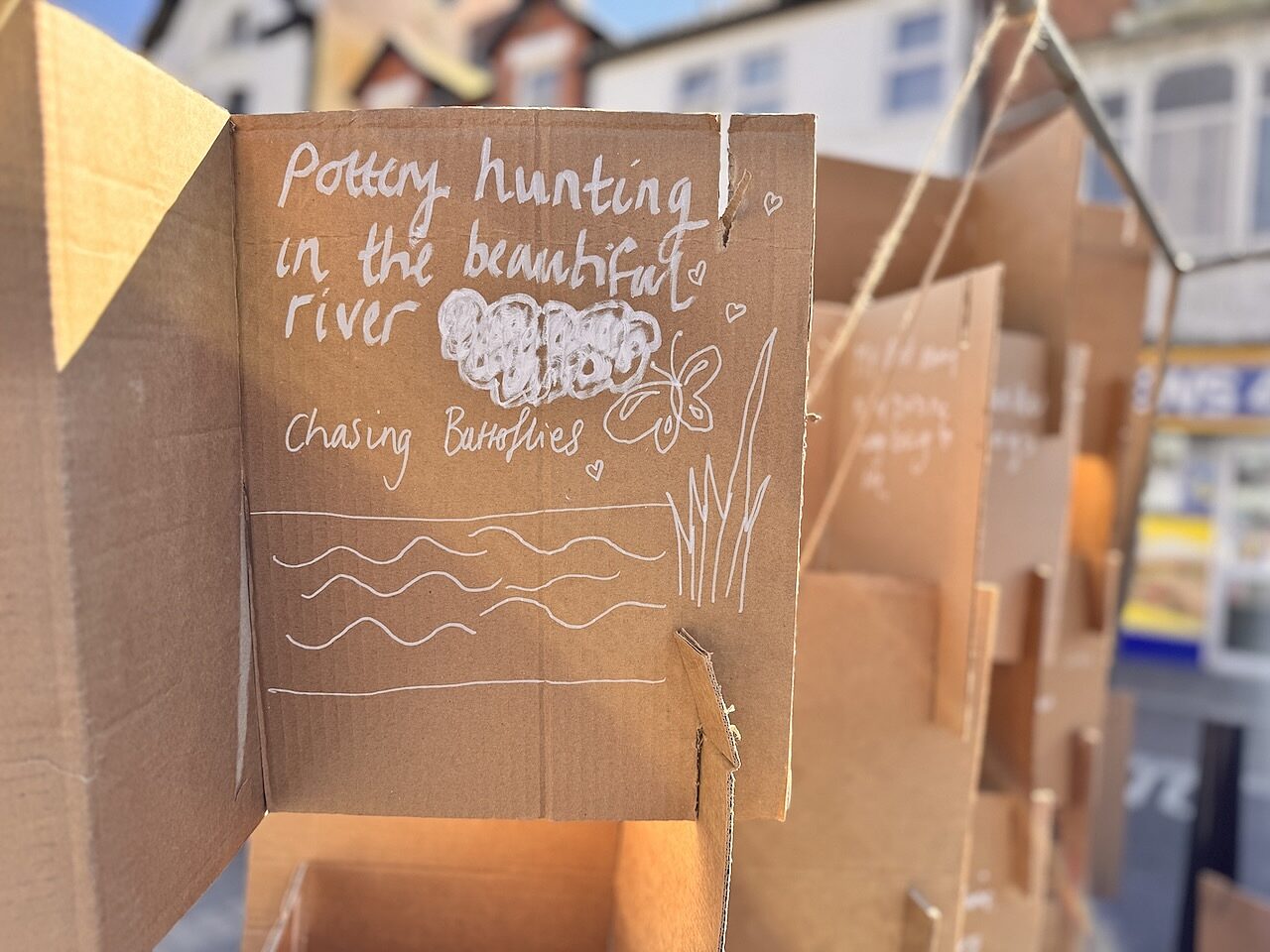
From the construction of a collaborative space emerges a form of conceptual mobility. While each MAKE Room is materially rooted and immobile, the underlying idea travels. This model resists the extractive logic of transporting materials, instead offering a methodology that benefits locality, responsiveness, and the plurality of voices involved; all contributions and marks are different and valued.
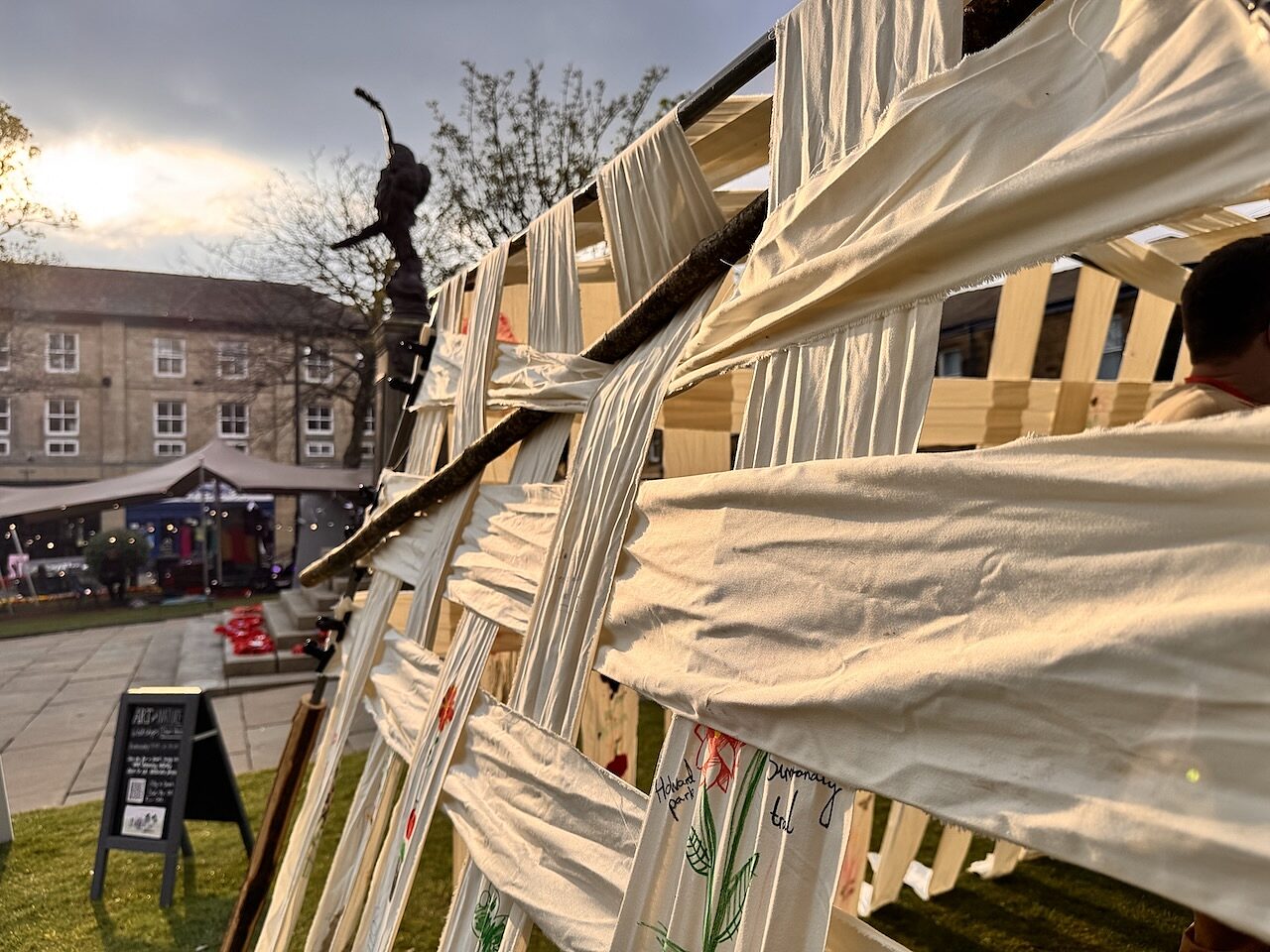
With initial MAKE Rooms that have been constructed what is striking is how immediate the contained space makes you feel different to outside of it. The hope that such a space could make you feel and think about nature connectedness, local communities, question immediate surroundings, was proven to exist, this is exciting and something we are still working with to understand further: for example is it just inhabiting the physical space that creates this atmosphere, or is it also a result of making the space as well? In either case, the MAKE Room becomes more than a structure. It becomes a site of dialogue, a space for embodied thinking, and a shared lens through which to reimagine creative ecologies and regenerative futures.
Cora Glasser, Glassball Studio

MORE NEWS
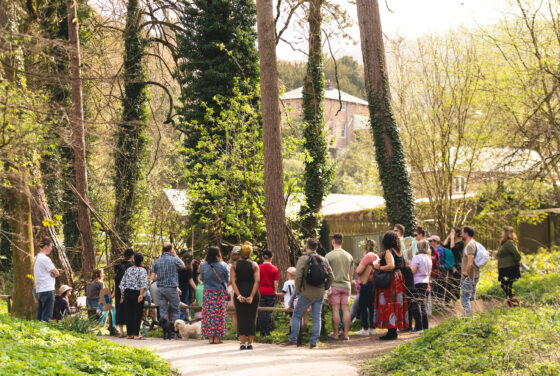
Reflecting on Derbyshire Makes 2025
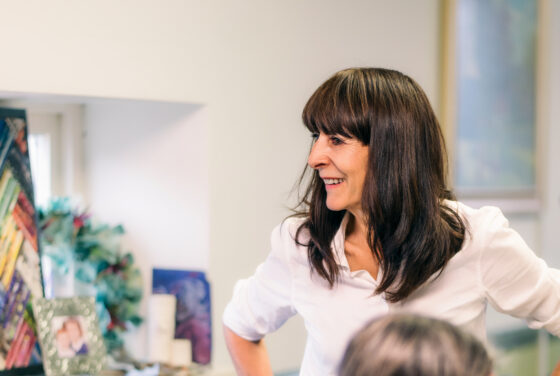
Join Junction Arts in Bolsover and Chesterfield
